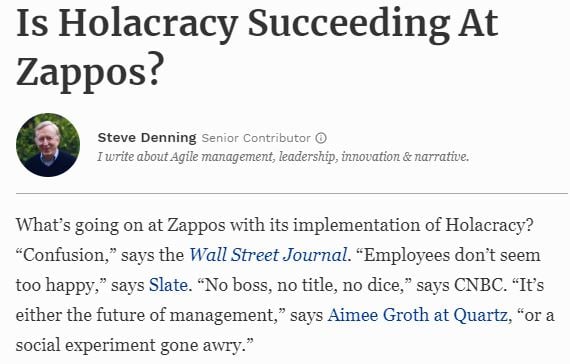After the last talk at the Government Digital Transformation Conference last week, I don’t think I will ever look at the phrase ‘digital transformation’ in the same way again. As Emma Stace (@emmastace) pointed out in her speech, digital transformation is also about changing the culture of a workplace, which is an ongoing process. Unfortunately, digital transformation is seen as a single task. Transform and you are done. And, as ever, there is a vast canyon separating policy and delivery. So, from now on, I will call it digital evolution.
Another speaker at the conference, Steve Mordey from Microsoft, talked about his experience working with IT services in the Public Sector. Invariably he and every digital evolution champion he met, heard these four excuses:
- We have too much going on to address this now.
Translation: I don’t have time to implement something that will save me time.
- To do this, we will need to replace <insert system name>.
Translation: The make <insert system name> do what this other system is doing, even though it is inefficient, and we hate it.
- We cannot afford it now.
Translation: I am trying to do the best I can with the resources I have, but everyone is so focused on short term ROI that even I can’t afford to look at it differently.
- We are tied to a contract that gives us part of this.
Translation: Make do with what we have. It doesn’t matter if it doesn’t do what we need, It doesn’t matter that it’s restrictive, it doesn’t matter even if we can integrate it into your new solution.
As fun as it is for me to come up with snarky comments, the idea of this article is to delve in deeper into the subtext of these ‘excuses’. What are the actual hurdles? What is the context? And is it really workplace culture that needs to change?
Steve found out that there are normally six reasons why there is a problem when implementing something new:
1. Unclear organising principles
Are the organisations goals and priorities clear? If not it is hard to find an efficient way of working towards a common goal. For example, if an organisation’s goal is sustainability and everyone is clear about what that means, organically sustainable practices will spread through the company.
2. Unclear identity strategy
Who should have access to what and why? And do those people who need access get access in time? Who is responsible for what? And who reports to who? Even with stringent procurement procedures
3. Neglected user adoption
When we build it, they will come. <Cue cricket sounds.>
Launching a new system and not telling people about it for forgoing training is a recipe for disaster. Worse is hiding the new solution in convoluted gating or jargon. It can be hard to get people who have been using work-arounds for most of their career to switch overnight. The failure here is forgetting that all users will be stakeholders.
4. Poor business engagement
Do your solutions actually help your people and your organisation work or serve better?
Successful business engagement employs strategies gained from aligning the expertise, perspectives, and collective experiences of an extensive network of partners and stakeholders.
5. Neglected legacy service model
Is there a place for backwards compatibility while old systems or old files are converted to new ones?
No one wants to lose archival information and rightly so. However, just like when we switched from paper to floppy disk, from floppy disk to CD-ROM, from CD-ROM to hard-drives and added the cloud, there has to be a way to manage, access, and update legacy data factored into implementing a new system.
6. Confused implementation structure
This point speaks for itself. Here is a lovely little horror story from the private sector, when Zappos embraced Holacracy:
If you think your organisation uses too much jargon in their handbooks, or training, I would like to show you this extract from the Holacracy Constitution:
2.6.3 Removal of Sub-Circles
A Circle may remove, through its due governance process, any Sub-Circle contained within such Circle at any time, by (a) removing such Sub-Circle entirely, in which case all of such Sub-Circle’s Roles, including further Sub-Circles, recursively, shall also be terminated, however any Policies defined for such Sub-Circle’s Domain shall be retained by such Circle unless otherwise specified through such Circle’s governance process; or (b) collapsing such Sub-Circle back into a Role that is not authorized to serve as a Circle, in which case all of such Sub-Circle’s Roles shall be automatically terminated, including any further Sub-Circles, recursively, but such Role so collapsing shall itself be retained, as shall any Policies defined for such Role’s Domain; or (c) dissolving the Sub-Circle’s boundary without removing its contents, in which case such Sub-Circle shall be removed, however all Policies and Roles within such Sub-Circle, including further Sub-Circles, shall be retained within the Circle so dissolving such boundary.
If you managed to read that and understood what it meant, you have my respect and I will treat you to a coffee.
Getting back to the point of all this: digital transformation is not a singular task, it can sometimes mean a shift in culture and a re-evaluation of an organisation’s work practices.
Digital evolution can lead to so much more than efficient systems, it can also positively impact an organisation’s sustainability to the public’s perception of that organisation. Then of course there is the benefit of added security and better control of information. However, digital evolution is based in long-term goals and thinking, which is the foundation of the public sector to begin with.
Why not start your digital evolution by eliminating paper at your meetings? Contact us for a free trial and demo today.










